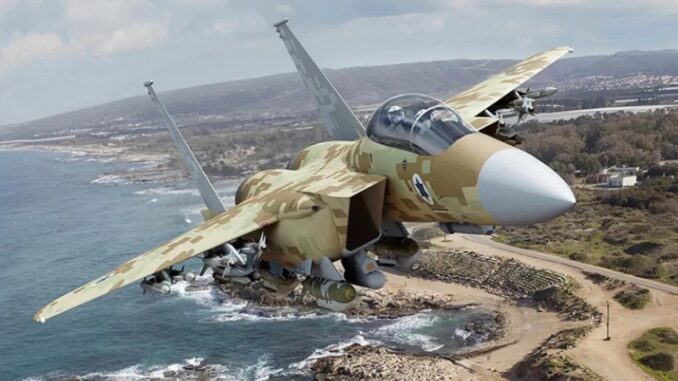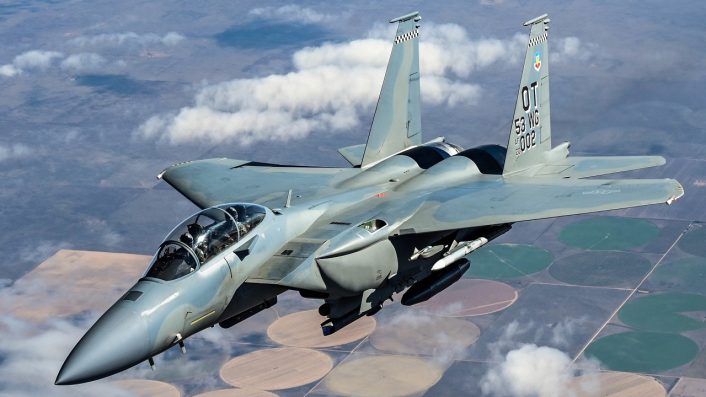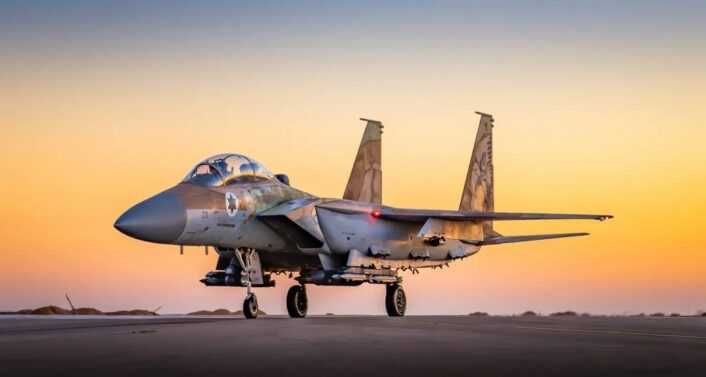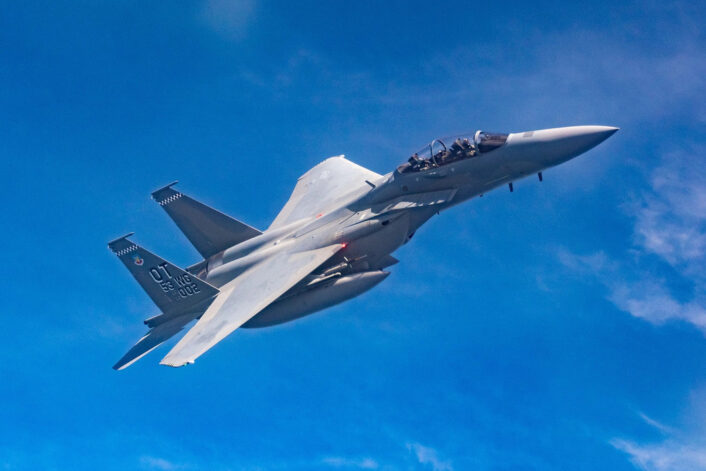
The US Secretary of State has approved the sale of 50 F-15EX, which will be renamed F-15IA, to Israel, as well as the upgrade of the 25 F-15I Ra’am currently in service to a similar configuration.
The US Defense Security Cooperation Agency (DSCA) has just announced that the US Secretary of State has approved the possible sale of the F-15EX Eagle II to Israel. The aircraft, designated F-15IA (Israel Advanced), will be sold together with the mid-life update kits for the already in-service F-15I Ra’am, bringing the existing fleet to the same configuration of the newer variant.
The deal, valued at $18.82 billion, is part of five Israeli FMS deals approved today. These also include AIM-120 AMRAAM missiles, 120mm tank shells, 120mm mortar shells and medium tactical vehicles. The approval of these FMS deals comes as tensions in the Middle East continue to rise and await the retaliatory strike Iran has threatened against Israel.
The DSCA notice states that Israel has requested the sale of up to 50 F-15IAs along with 25 MLU modification kits. In addition, the FMS also includes 120 F110-GE-129 turbofan engines, 90 Advanced Display Core Processors II, 75 APG-82(V)1 Active Electronically Scanned Array (AESA) radars, and 50 AN/AAQ-13 LANTIRN navigation pods.
Interestingly, the Eagle Passive Active Warning Survivability Systems (EPAWSS) are missing from the equipment list. The ALQ-250 is an advanced electronic warfare and surveillance system that, according to BAE Systems, is fully equipped with radar warning, geolocation and enhanced ability to detect and defeat airborne and aerial threats in signal-dense and highly contested environments.
Other equipment includes LAU-128 missile rails, M61 Vulcan 20mm cannons, embedded GPS/inertial navigation systems, helmet-mounted signaling systems, and APX-119 identification friend or foe (IFF) systems. These complement the usual support, logistics, and spare parts typically included in similar programs. Deliveries are expected to begin in 2029.

The second FMS for the Israeli Air Force includes 30 AIM-120C-8 Advanced Medium Range Air-to-Air Missiles (AMRAAM) and related equipment, totaling $102.5 million. The DSCA mentions that the weapons will be new production, but does not provide a delivery date.
The FMS statement added that “it is critical in the U.S. national interest to help Israel build and maintain a strong and ready self-defense capability,” before mentioning recent events. “AMRAAMs are a critical air combat capability used to defend against airborne threats, such as the salvo of missiles and drones fired at Israel on April 14,” the statement said.
The sale of the F-15EX
The sale of the latest F-15 variant to Israel has been long awaited. Last year, the Israeli Defense Ministry sent an official request to the US government, initiating the process for possible approval of a foreign sale of military aircraft.
The Israeli government expressed interest in the F-15EX as early as 2020, when acquiring more F-35s and F-15s was among its top priorities. However, political instability, budgetary problems and the Gaza war delayed the F-15 deal, while only the contract for more F-35s was finalized. Since 2020, the Israeli Air Force has expressed an urgent need for more F-15s capable of carrying heavy loads, including heavy Israeli-made weapons, to destroy fortified targets such as Iranian nuclear facilities.
Only 25 aircraft were originally requested, although there were reports that their number could be increased to 50. The sale of the MLU conversion kits was also expected, as Israel requested the upgrade of its 25 F-15I Ra’am, the Israeli variant of the F-15E Strike Eagle, to an avionics configuration similar to the F-15EX.

The F-15EX Eagle II
Developed from the F-15QA, the most modern Eagle variant, the new F-15EX is the result of a set of requirements that arose primarily after the US armed forces were directed to adapt to the new threats posed by China and Russia as part of the National Defense Strategy. While the aircraft closely resembles the QA variant, it incorporates some US-only features such as the new AN/ALQ-250 Eagle Passive Active Warning Survivability System (EPAWSS) electronic warfare and surveillance system and the Open Mission Systems (OMS) architecture.
More specifically, the F-15EX features a fully glazed cockpit with a 10 x 19-inch multifunction color touchscreen and JHMCS II in both the front and rear cockpits, a low profile HUD in the front, a standby display and a dedicated indicator for engine, fuel and hydraulics, in addition to standard warning lights, switches and HOTAS (Hands On Throttle-And-Stick) control.
The systems are powered by the Advanced Display Core Processor II, supposedly the fastest mission computer ever installed in a fighter jet, and the Operational Flight Program Suite 9.1X, an adapted variant of Suite 9, which is used in the F-15C and F-15E and is intended to ensure the full interoperability of the new aircraft with the “old Eagles”.
The F-15EX is equipped with the new AN/APG-82(V)1 Active Electronically Scanned Array (AESA) radar. Developed from the APG-63(V)3 AESA radar on the F-15C and the APG-79 AESA radar on the F/A-18E/F, the radar enables simultaneous detection, identification and tracking of multiple air and ground targets at greater distances than mechanical radars, enabling continuous target observation and information sharing for better decision-making.

The capacity for chaff and flares has been increased by 50%. Four more dispensers have been added (two for each fairing) in the EPAWSS fairings behind the tail fins, bringing the total to 12 dispensers with 360 rounds. This improvement is important because in modern scenarios, chaff and flares are often released preemptively to counter MANPADS (Man Portable Air Defense System). This means that the Eagle now has more countermeasures for better protection.
The F-15EX can be equipped with Conformal Fuel Tanks or FAST (Fuel And Sensor Tactical) Packs. These 750-gallon (2,839.1 l) tanks, also used on the F-15E Strike Eagle, have six attachment points for weapons and two for sensors such as the Sniper ATP and LANTIRN navigation pod. Unlike standard external fuel tanks, the FAST Packs cannot be jettisoned in flight, but do not unduly affect the F-15’s performance, allowing the same maneuverability without G-load limitations, only having a structural limitation not to exceed Mach 2 (the F-15’s reported top speed is Mach 2.5).
The Eagle II completed Phase I of Integrated Test and Evaluation (IT&E) last year. During this phase, the F-15EX participated in 19 large weapons exercises integrating with 5th generation aircraft, recorded the longest air-to-air missile deployment, and was the first F-15EX deployment with the longest non-nuclear air-to-ground munitions drop in the inventory.

